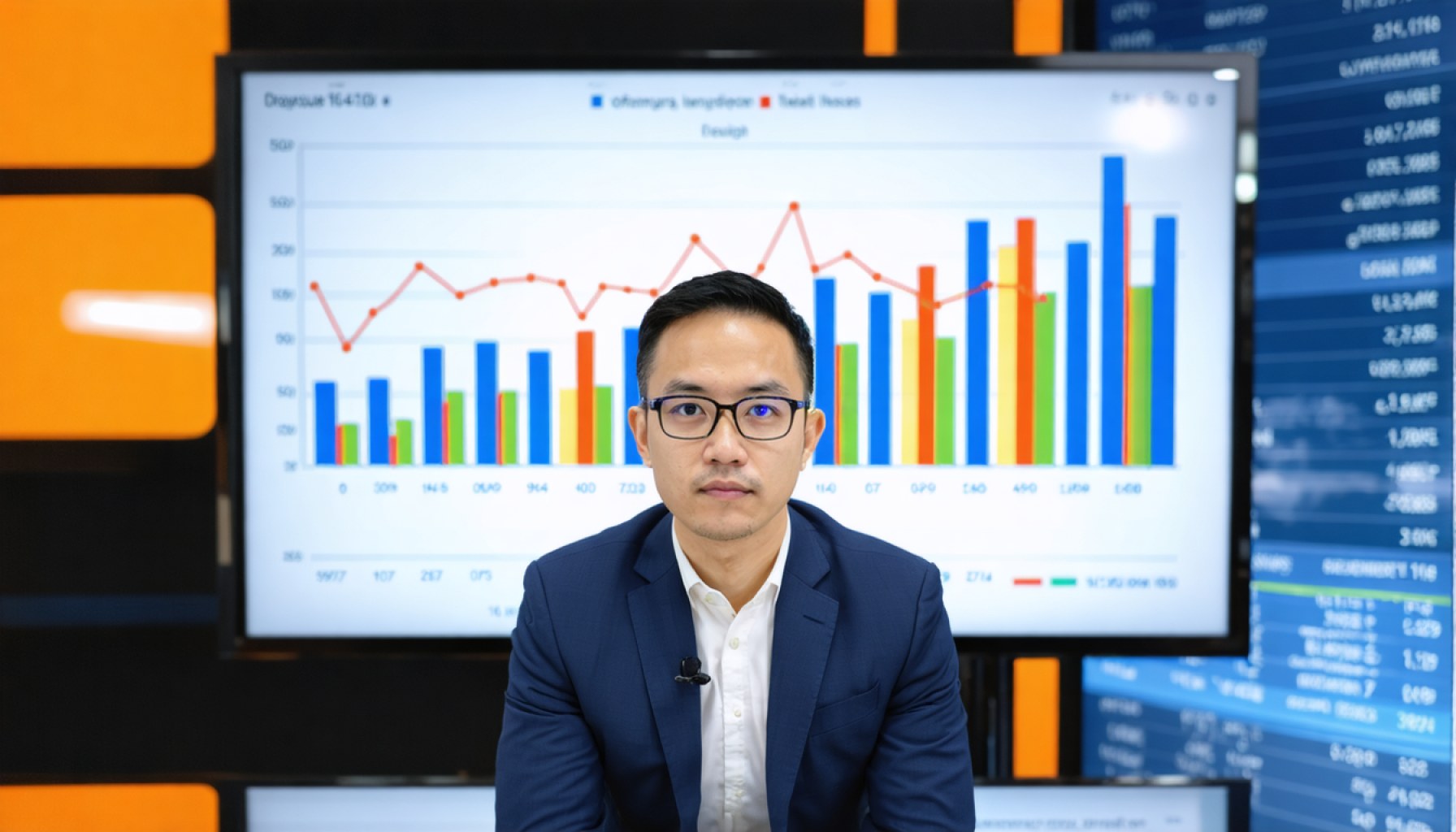- Wall Street indices suffered significant declines, with the S&P 500 dropping 0.7%, the Dow Jones Industrial Average falling by 306 points, and the Nasdaq Composite decreasing by 0.4%.
- The economic downturn is primarily driven by escalating U.S.-China trade tensions, highlighted by China increasing tariffs on U.S. imports to 125%.
- Investor anxiety has led to a rise in gold prices and a decline in the U.S. dollar, signaling uncertainty in long-term economic forecasts.
- Trade wars impact not only markets but also consumer prices, business revenues, and overall economic growth.
- In the current volatile environment, adaptability and innovation are crucial for navigating the unpredictable global economic landscape.
As the financial world watched with bated breath, Wall Street’s once-buoyant indices took a sudden nosedive, mirroring the growing tension in global trade dynamics. The week had witnessed a rollercoaster of highs and lows, but Friday morning unfolded a more somber narrative. Amidst this turbulence, the S&P 500 slipped by 0.7%, unsettling investors who had briefly enjoyed a mid-week respite. The Dow Jones Industrial Average, synonymous with American economic health, dropped 306 points, while the resilient Nasdaq Composite shrank by 0.4%.
The economic climate was marred by the latest twist in the ongoing trade war—a formidable battleground that has seen both the United States and China locked in a tit-for-tat tariff skirmish. With China magnifying tariffs on U.S. imports to an eye-watering 125%, the stakes have been significantly raised. This aggressive maneuver by China is a clear signal of no imminent ceasefire, rattling markets that had hoped for stability. The era of unprecedented globalization finds itself at a crossroads, as these two economic behemoths vie for dominance, each blow intensifying global economic anxieties.
Subtle signs of this tension ripple through other financial realms. Gold prices—a traditional safe haven—rose, indicating investor unease. Concurrently, the U.S. dollar stumbled, reflecting growing uncertainty about long-term economic forecasts. Fear, palpable and pervasive, overshadowed fleeting moments of optimism.
Trade conflicts are not mere boardroom discussions or fiscal spreadsheets. They are a battlefield with real-world consequences, deeply affecting consumer prices, business revenues, and ultimately, economic growth. As the titans clash, the ramifications are felt from Wall Street corridors to small-town America.
For the investor, the strategist, or the everyday citizen, the key takeaway from this tempestuous week is clear: adaptability is essential. As global economies adjust to this new normal, resilience and innovation will determine who emerges unscathed. The financial landscape, reminiscent of tumbling dominoes, stands as a testament to the unpredictable dance of global politics and economics. In this evolving chapter, the power to thrive lies in anticipating the next move, embracing change, and navigating through uncertainty with informed precision.
How Global Trade Wars Affect Your Wallet: Insights and Savvy Tips
Understanding the Impact of the Trade War on Your Finances
The ongoing trade tensions between the United States and China have created a volatile atmosphere in global markets, significantly impacting major financial indices such as the S&P 500, Dow Jones Industrial Average, and Nasdaq Composite. As these trade skirmishes intensify, understanding their ramifications is crucial for investors and consumers alike.
Key Developments and Market Reactions
1. Market Declines: The S&P 500 fell by 0.7%, while the Dow Jones Industrial Average plunged 306 points. The Nasdaq Composite also experienced a 0.4% shrinkage. These declines illustrate growing investor unease amidst global trade tensions.
2. Tariff Implications: China raised its tariffs on U.S. imports to 125%, significantly heightening stakes in the trade war. This escalation affects everything from raw materials to consumer goods, leading to higher costs that can trickle down to consumers.
3. Safety in Gold: As a hedge against market instability, gold prices have risen. This typically signals investor wariness and a flight to safer assets during economic uncertainty.
4. Currency Fluctuations: The U.S. dollar’s recent stumble reflects concerns over the long-term economic impact of trade disputes, influencing everything from travel expenses to import costs.
How-to Steps & Life Hacks: Mitigating Personal Financial Impact
– Diversify Investments: To cushion against market volatility, spread investments across various asset classes, including stocks, bonds, and commodities like gold.
– Monitor Tariff-affected Goods: Pay attention to goods affected by tariffs, such as electronics and clothing, and consider purchasing before prices increase further.
– Hedge Currency Risks: If traveling or purchasing abroad, consider locking in exchange rates in advance to protect against currency drops.
– Stay Informed: Keep abreast of global trade developments and market trends to make timely financial decisions.
Real-World Use Cases: Who’s at Risk?
– Manufacturers and Exporters: Companies reliant on importing raw materials or exporting finished goods are most vulnerable to the effects of increased tariffs and trade restrictions.
– Small Businesses: Enterprises dependent on global supply chains may face increased costs and delays, necessitating strategic adjustments.
Market Forecasts & Industry Trends
The current trade climate suggests a prolonged period of tension, with variable outcomes. Analysts predict continued volatility in equity markets and potential opportunities in commodities and alternative investments.
Controversies & Limitations
While trade wars aim to level the economic playing field, critics argue they can lead to mutual economic strain, miscalculations, and unintended consequences that exacerbate global insecurities.
Security & Sustainability
In a trade-sensitive world, economic stability often hinges on diplomatic resolutions and strategic trade agreements focused on long-term growth and environmental sustainability.
Actionable Recommendations
– Stay Agile: Investor and consumer adaptability is key. Embrace flexibility in financial strategies and lifestyle choices to navigate the unpredictable economic landscape.
– Educate & Prepare: Leverage credible resources to educate yourself on market conditions and seek professional financial advice if needed.
Related Links
– The Wall Street Journal
– Bloomberg
By understanding the dynamics at play and implementing these practical steps, you can better position yourself against the adverse effects of global trade tensions, ultimately safeguarding your financial future.
